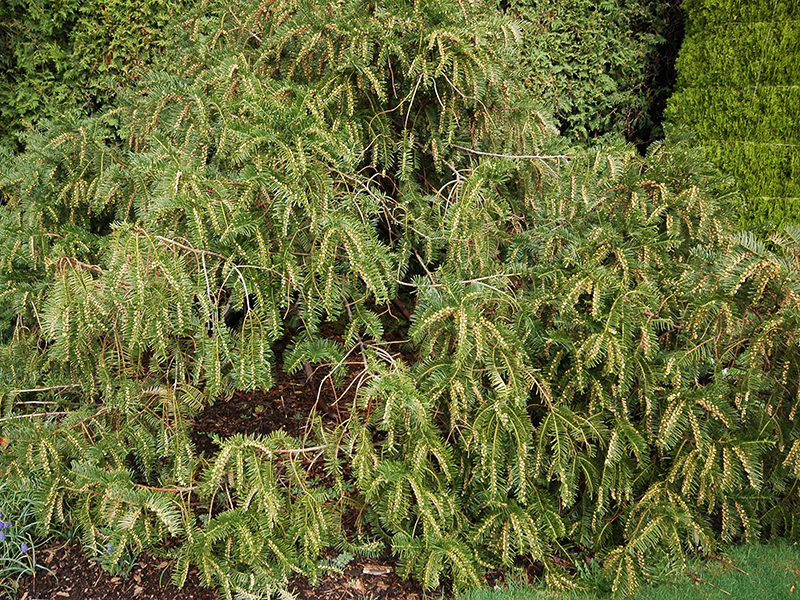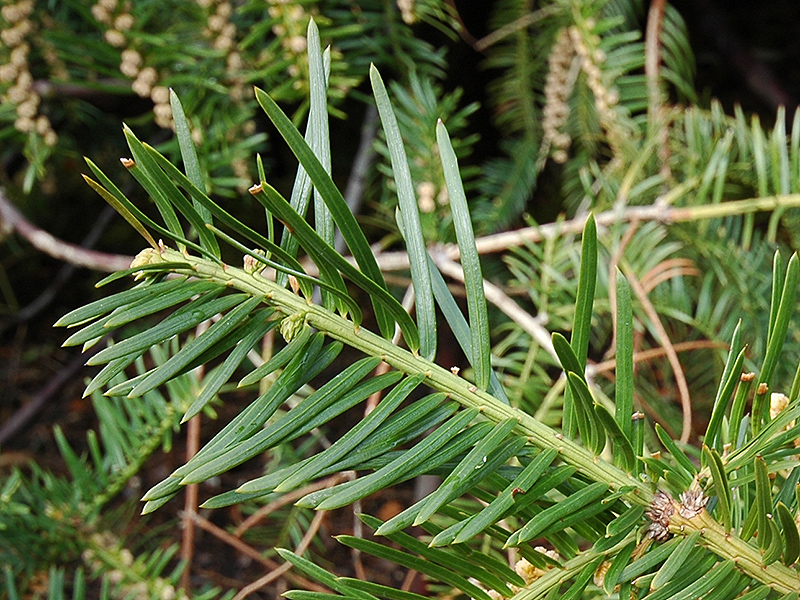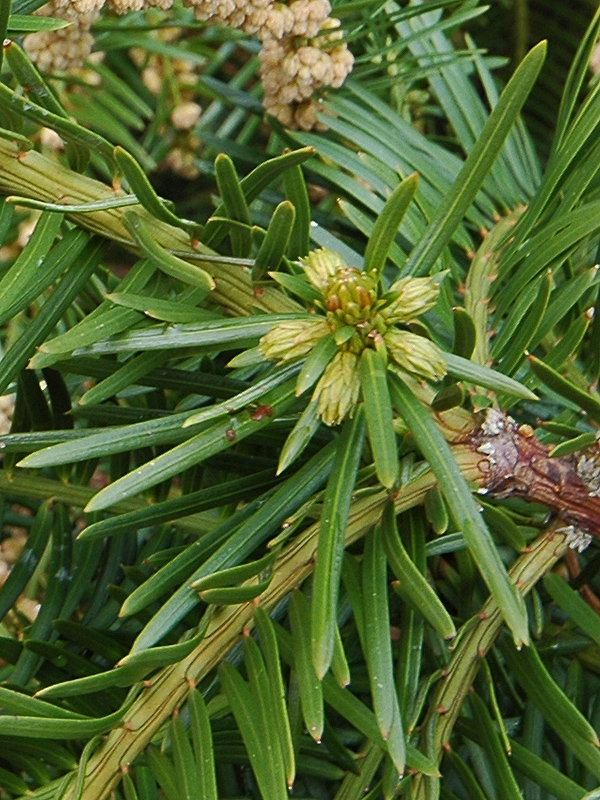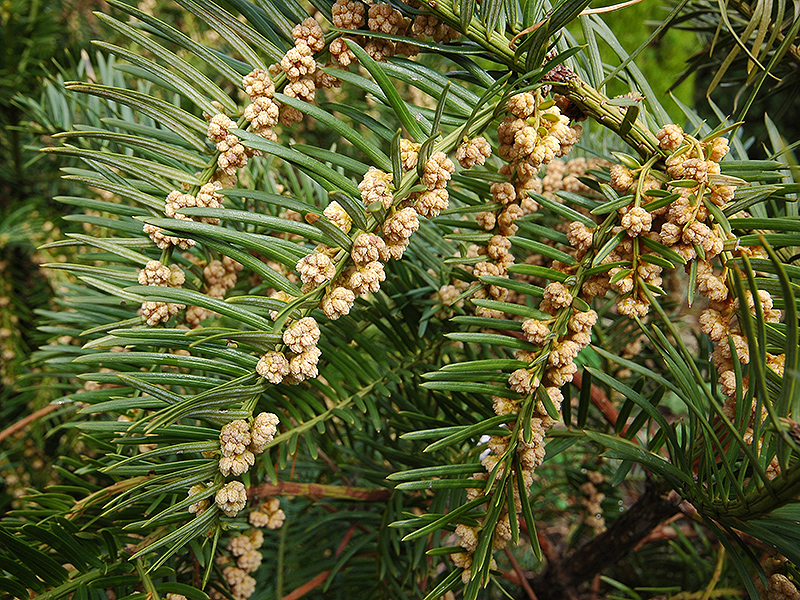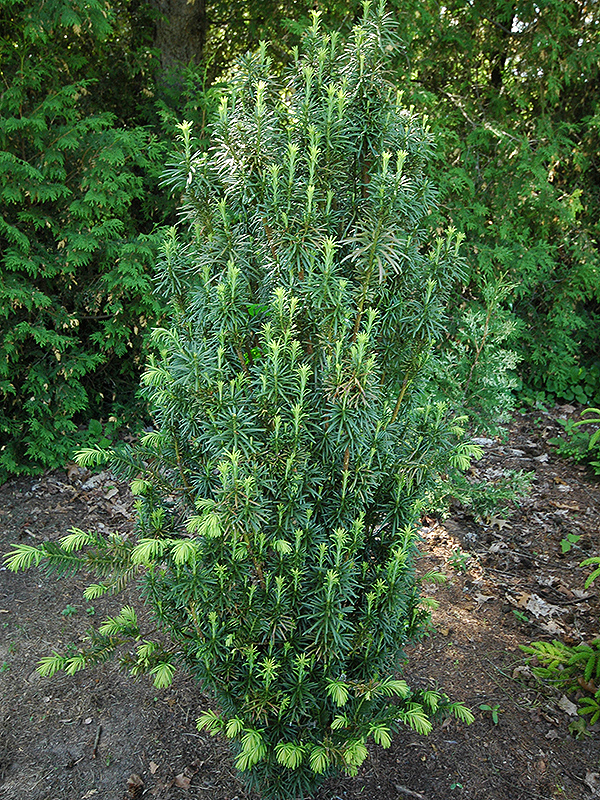| General Description | Being native to Japan, in its natural habitat this plant can grow to a maximum height of 10 m although in our climate it has been seen to grow to1–3 m. The name is an allusion to the purplish-green fruit that is plum shaped, these fruits take two years to mature. In North America and Europe this plant is found to be the most commonly cultivated. This evergreen shrub can still form a small fastigiated tree although it naturally grows wider than tall. |
| ID Characteristic | Foliage resembles that of the taxus although the fruit differs. The fruit is an ovoid to obovoid shape that starts out green and once ripened are brown in colour. Almost plastic-like in appearance this plant produces alternate lustrous green foliage with whorled branching. Although this plant naturally spreads when growing it can be pruned or cultivated into fastigiated form. Displays rich black to green foliage combined with graceful elegant form to add great winter appeal. Glabrous stems with distinct ridges and furrows, usually stout and a light green; although, in winter it can adapt a bronze colour. |
| Shape | Bushy, multi-stemmed plant that grows wider than tall. With its dense foliage and excellent pruning response this plant can be formed to either its usual spreading form or a fastigiate small tree. |
| Landscape | Flourishes where extreme heat is an issue for most Taxus making this plant a great Taxus substitution due to its drought tolerance. Although this plant is drought tolerant it is not at all salt resistant. Exceptionally shade tolerant this plant is aristocratic for an evergreen hedge, groupings, massings and accents. Responds well to heavy pruning being cut back to almost the ground, due to the feathery dense foliage it is ideal for topiary and bonsai pruning. There have been several superior clones identified by Dr. Zhang's Ph.D work that have moved into commerce. Although relatively slow growing in a garden with little space, this trait can be advantageous. |
| Propagation | Cuttings collected in autumn or spring from the semi-ripe, upward- growing wood. Cold stratification outside only produces 33% germination, to reach a 50% germination you would have to plant out in autumn and leave until the following winter period. Many have attempted to germinate in 3 months with a mist system and applying rooting promoters but have found to allow for successful germination you should leave it for 1–2 years. Patience is a virtue when propagating. |
| Cultivation | Like the Taxus this plant has a rather fleshy white root system. Easily transplanted as a container grown plant, it prefers slightly acidic soils that are sandy. Although this is usually used as an understory plant (loving partial shade) once it is established it is tolerant of extreme heat and drought. |
| Pests | Relatively no serious pests other than some soil nematode issues and minor mite damage. This plant cannot tolerate salt at all nor dry winds. |
| Notable Specimens | Niagara Parks Botanical Garden, Niagara Falls, Ontario, Canada. Bayard Cutting Arboretum, New York, New York. |
| Habitat | Usually wider than high this spreading evergreen is found as an understory plant in woodland areas. Naturally found in the understory/ the edge of woodland areas of Northern Japan, Korea, and China. |
| Bark/Stem Description | Distinct ridges and furrows found where the needles meet the stem. In this plants youth the bark is found to be a lighter-green compared to its needles. When mature the bark changes to a reddish-brown to grey colour with large strips of exfoliation. |
| Flower/Leaf Bud Description | Opening and shedding pollen in February to March, the male bud is ovate to globose in shape and is found on a short stalk. The female bud contains multiple ovules, these buds are ovoid to conical in shape and are found on a thick stalk. |
| Leaf Description | Simple, alternate needle-like foliage is stiff and almost plastic like in texture. Tips are found to be acute to mucronate. Linear and spirally arranged along the stem the needles create a V-shaped trough through due to each row on either side. The adaxial portion being a lustrous dark green with two grey strips of stoma, approximately 15 rows of stoma each, on the abaxial portion. Needles are wider at the base than at the tip and are approximately 2–4 cm long and 2–4 mm wide. |
| Flower Description | Flowers of this plant emerge in early spring and are dioecious. Pairs of carpels in a mass of scales borne on the stems underside turning to a fleshy olive-green fruit composes the female. Arranged in clusters of small rounded heads on the previous season's growth are bracts with 4–6 stamens enclosed, composes the male. |
| Fruit Description | Fruit is 2–3 cm long and 5–15 mm wide, obovoid in shape. In autumn, ripening to a purple-brown colour, the fruit is considered a naked seed until cross-pollination, when the fruit becomes fleshy. |
| Colour Description | When young the bark is found to be a lighter-green than its foliage and with age the bark becomes a grey-brown to reddish-brown colour. Foliage is a dense lustrous green colour which on the odd occasion can also be a blue-green or yellow-green colour. The fruit it bares is an olive-green colour ripening to a brown even slightly purple colour. |
| Texture Description | At maturity the bark has a very coarse texture providing an intriguing foliage contrast. The foliage is found to be a medium-fine texture year round. |
